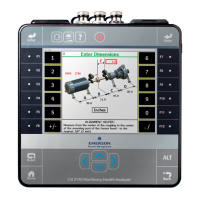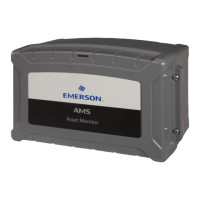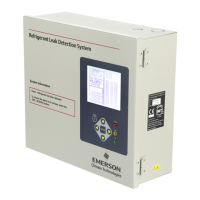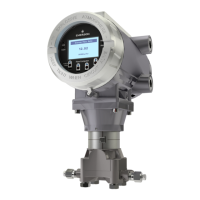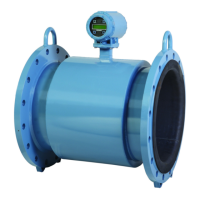Option Description
Exponential Average Average each new spectra with all prior ones in the decay
exponential form, where the rate of decay is set by the
averages value. A smaller average shows the vibration with a
faster decay or rate of change. Use this advanced method if
vibration behavior varies significantly during measurement.
Note
Do not use for routine data collection.
6.7.5 PeakVue and demodulation
The analyzer can use PeakVue technology or demodulation when collecting data. PeakVue
technology samples data faster than demodulation to detect high-frequency stress waves.
PeakVue data is trendable, but demodulation is not.
PeakVue technology lets you find bearing or gear defects earlier than other
measurements. PeakVue technology removes normal vibration signals and captures the
actual amplitude of high-frequency impacts from bearing or gear defects. Bearing defect
frequencies appear in the PeakVue spectrum at their fundamental frequencies and
harmonics. The peaks are non-synchronous. Gear defects appear as peaks at the gear’s
shaft turning speed frequency and harmonics. The amplitudes in PeakVue data may be
very low.
PeakVue technology passes the input signal through a band-pass or high-pass filter and
samples with the peak detector. PeakVue technology allows numerous pre-defined
maximum frequency values.
PeakVue waveform data is corrected so that all peaks in the data display on the positive
side of the waveform. Trending of the G's Peak to Peak waveform value is the most
important parameter to trend on a PeakVue measurement to determine fault severity.
Enabling PeakVue technology
Use PeakVue technology from the Bearing/Gear Analysis - PeakVue Analysis Expert or by
enabling it from Manual Analyze for a measurement. Use an accelerometer to collect the
data.
The key settings for acquiring PeakVue data
• Filter - The high-pass filter should be greater than or equal to the Fmax, and it
defaults to 1000 Hz for machines greater than 600 RPM and 500 Hz for machines
less than 600 RPM.
• Fmax - Based on the highest fault frequency.
• Averages - The number of averages to collect. One average is recommended.
• Lines of resolution (LOR) - Capture five or more periods of lowest fault frequency.
Analyze and Advanced Analyze
MHM-97432 Rev 7 121
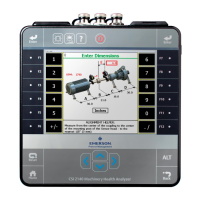
